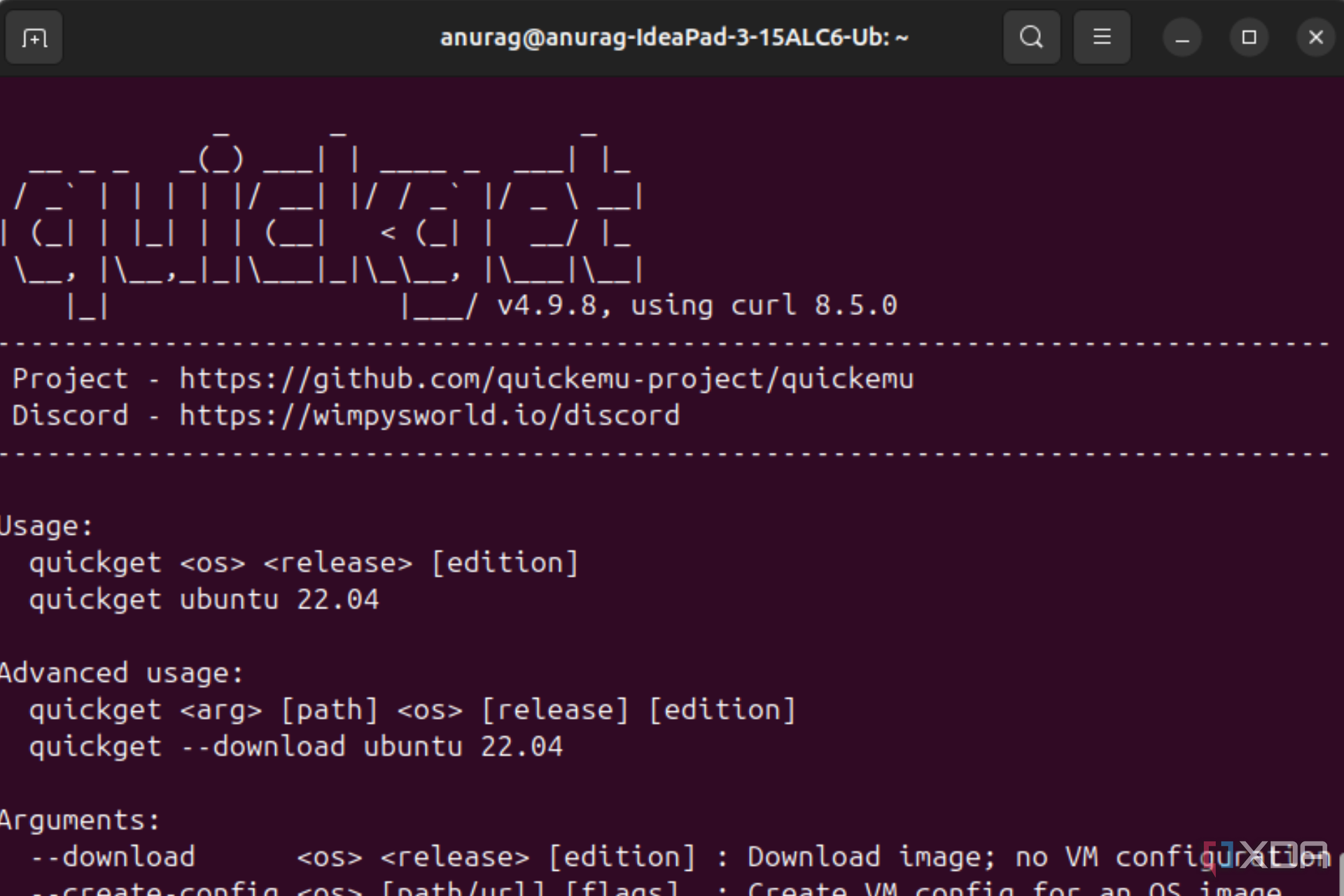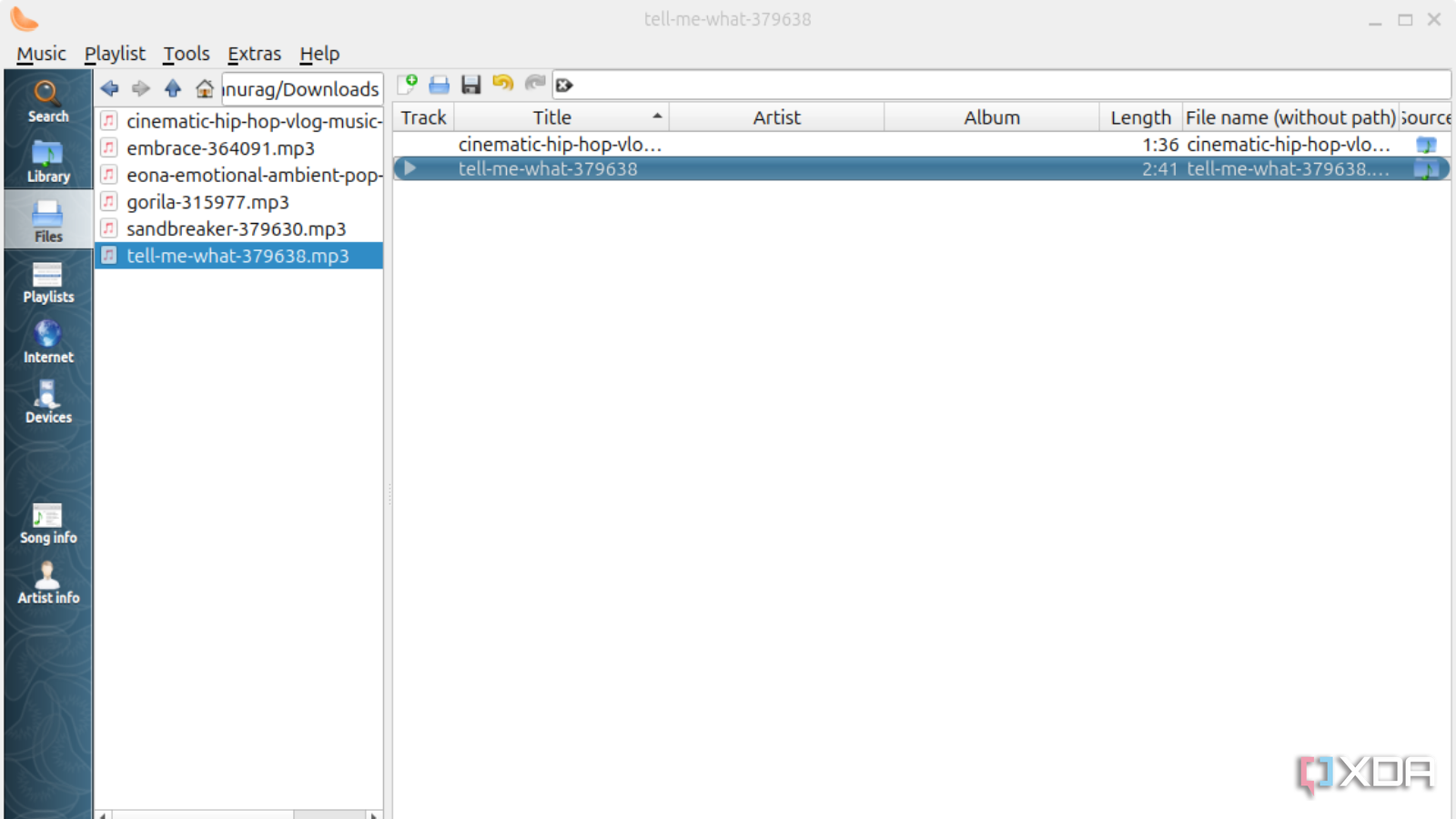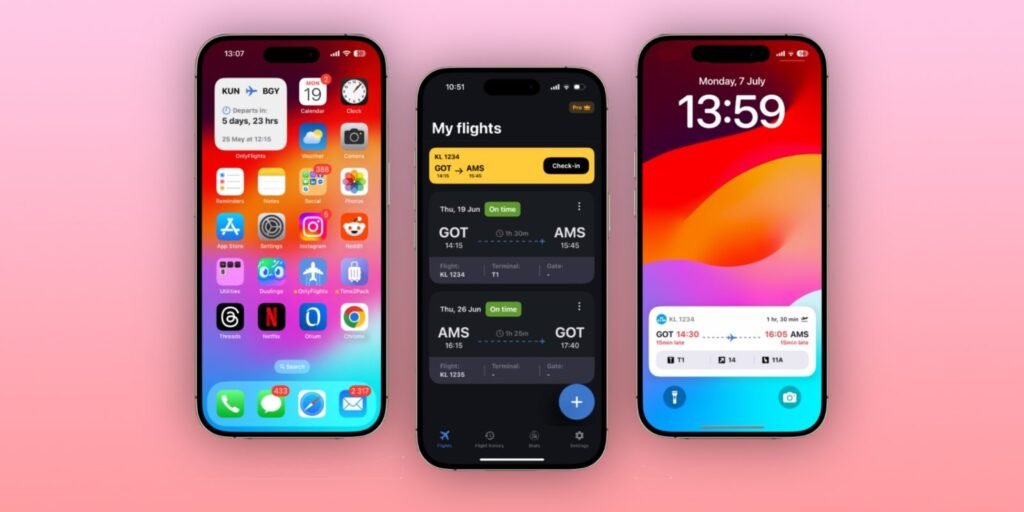Linux gives you options for everything. You don’t like an app? There is probably an open source alternative out there waiting for you. You don’t like the OS itself? There is probably a distro that meets your needs. However, the sheer amount of free software available can be overwhelming. You might not know which one to choose, so you go after the popular options. I used to do the same, but the nature of my job led me to explore some obscure apps, and these have now become an important part of my workflow.
5
Quickemu
Test multiple OSes easily

I frequently need to test new Linux distributions or run other operating systems, and Quickemu has made my life a lot easier. I can spin up a fully optimized VM in minutes using just two commands, one to fetch the OS image, and another to launch the machine.
Quickemu is a wrapper for QEMU that automatically downloads the operating system and creates the necessary configuration. It also detects your hardware and launches the VM with settings tailored to your system for the best performance.
It was originally built to simplify testing of Linux distributions. Virtual machines and their configurations can be stored anywhere, such as on external USB drives or in your home directory. No elevated permissions are needed to run them.
Over time, Quickemu has expanded to support macOS, Windows, most of the BSDs, and a wide range of lesser-known operating systems like FreeDOS, Haiku, KolibriOS, OpenIndiana, ReactOS, and others.
4
Clementine
Yes, it’s still very much alive

Clementine is an obscure (some might say “old-school”) music player that has won my heart. I started using it almost a decade ago, and it remains my favorite to this day. It’s a fork of the classic Amarok 1.4, which gives it a robust, library-focused design that’s hard to find in today’s minimalist players.
Clementine might not be the first music player that comes to mind, and that’s understandable. It hadn’t seen a stable release since 2016 and was considered abandoned for years. But in late 2024, the project came back to life with rolling releases, and it’s once again worth checking out.
If you have a large music collection stored locally, Clementine is one of the best apps you can use. It has a clean interface, works across platforms, and supports a wide range of audio formats. The player can automatically fetch song lyrics and artist information, and it even pulls metadata from MusicBrainz to fill in missing details.
The layout feels both familiar and slightly different. If you’re coming from iTunes or Winamp, there might be a brief adjustment period, but once you get used to it, the experience is smooth. Clementine plays nearly any format, including MP3, FLAC, OGG, WAV, and more.
3
Yazi
Better than any other terminal file manager
I’ve been a long-time user of Midnight Commander for managing files. Even with all the modern GUI file managers out there, I usually find myself working in the terminal. But command-line file management never felt as intuitive or fast as I needed. That changed when I discovered Yazi.
Yazi is a terminal-based file manager written in Rust. It’s keyboard-driven, incredibly fast, and packed with features. The interface runs in the terminal with visuals similar to ncurses, and it stays responsive even in very large directories.
One of Yazi’s best features is its asynchronous design. File operations don’t freeze the interface, so I can start a big copy or move task and continue browsing other folders. Yazi shows real-time progress and even lets me cancel tasks while they’re running.
Another thing I love is the preview feature. Yazi can display the contents of a file, and even images, right inside the terminal. It also plays nicely with other powerful CLI tools. You can use fd for quick file searches and rg (ripgrep) to search text within files.
2
NCDU
DU but pretty
The ncdu command offers a fast and easy way to see how disk space is being used on your Linux system. It lets you navigate through directories and files to identify what’s taking up the most space.
The name “ncdu” stands for “NCurses Disk Usage.” It uses an ncurses-based interface to present disk usage data in a more readable and interactive format. If you’ve ever run du -sh to figure out where your storage went, you know the results can be overwhelming.
The classic du command floods the terminal with numbers and paths that are hard to interpret at a glance. ncdu solves this by providing an interactive, navigable interface that makes it much easier to pinpoint large files and folders.
Instead of scrolling through hundreds of lines of output, you get a clean view that highlights the biggest space hogs. The interface also provides a summary of the current directory and supports actions like deleting files or directories directly from within the tool. Just press d on a highlighted item to remove it.
1
Denaro
Open-source finance tracker
Managing personal finances is something I’ve never been good at. I used third-party apps to track my spending but eventually stopped using them due to privacy concerns. I tried logging everything manually in a spreadsheet but gave up on that too. I even tried automating the process with n8n, but that didn’t help much.
What finally worked for me was Denaro, a lightweight, open-source app written in C#. It lets you manage multiple accounts at once using a simple tabbed interface, filter transactions by type, group, or date, and set up recurring entries for things like monthly bills.
Denaro also supports transfers between accounts, and if you’re switching from another tool, you can import transactions in CSV, OFX, or QIF format. You can also export your data to a CSV file, which makes it easy to back up your records or analyze your spending in other tools like spreadsheets.
Linux is full of options
There are many Linux apps that do not get the limelight but are still great. If you want more such options, check out some of my favorite underrated apps. You can also explore these alternatives to default Linux commands that get the job done.








